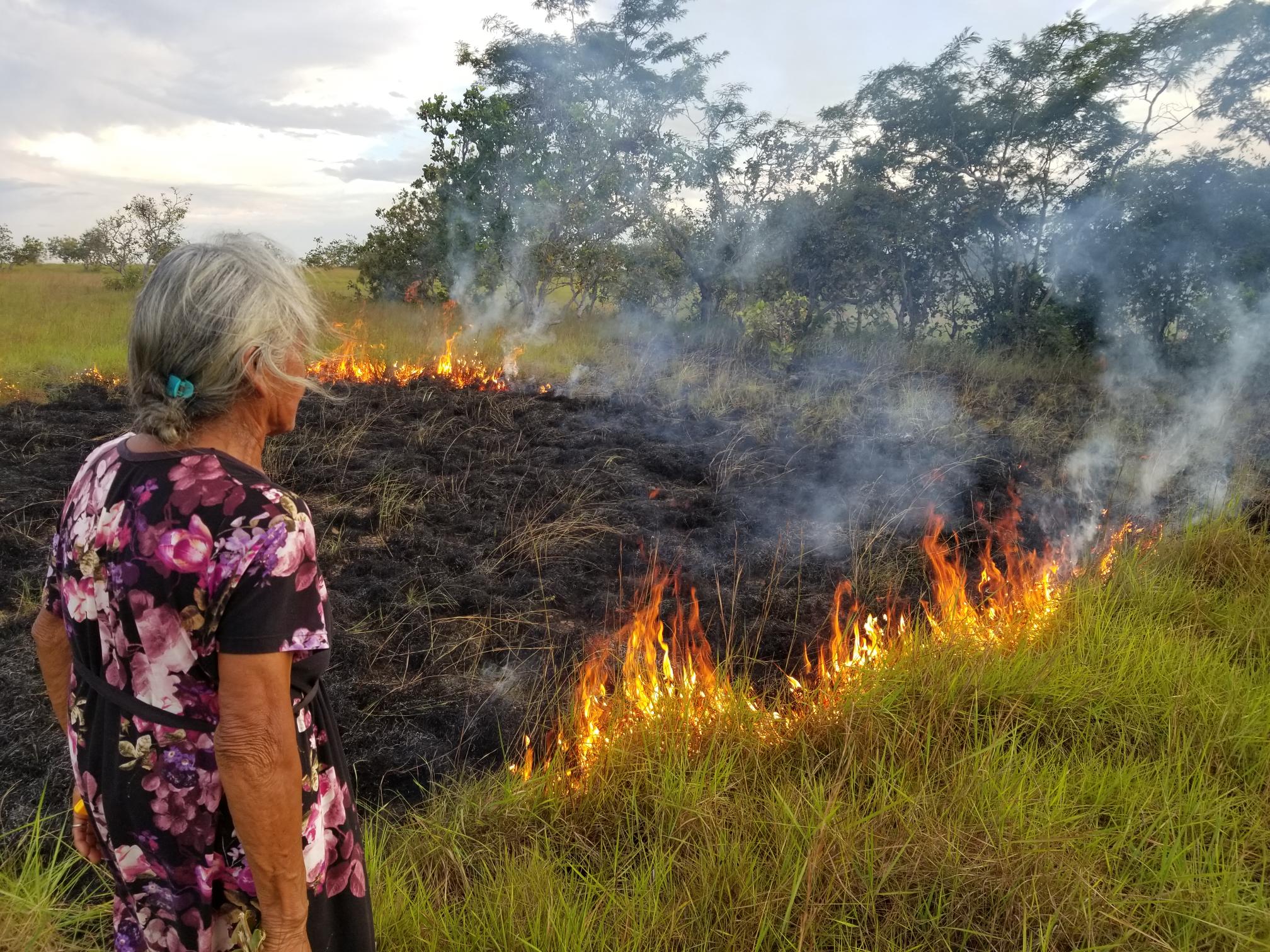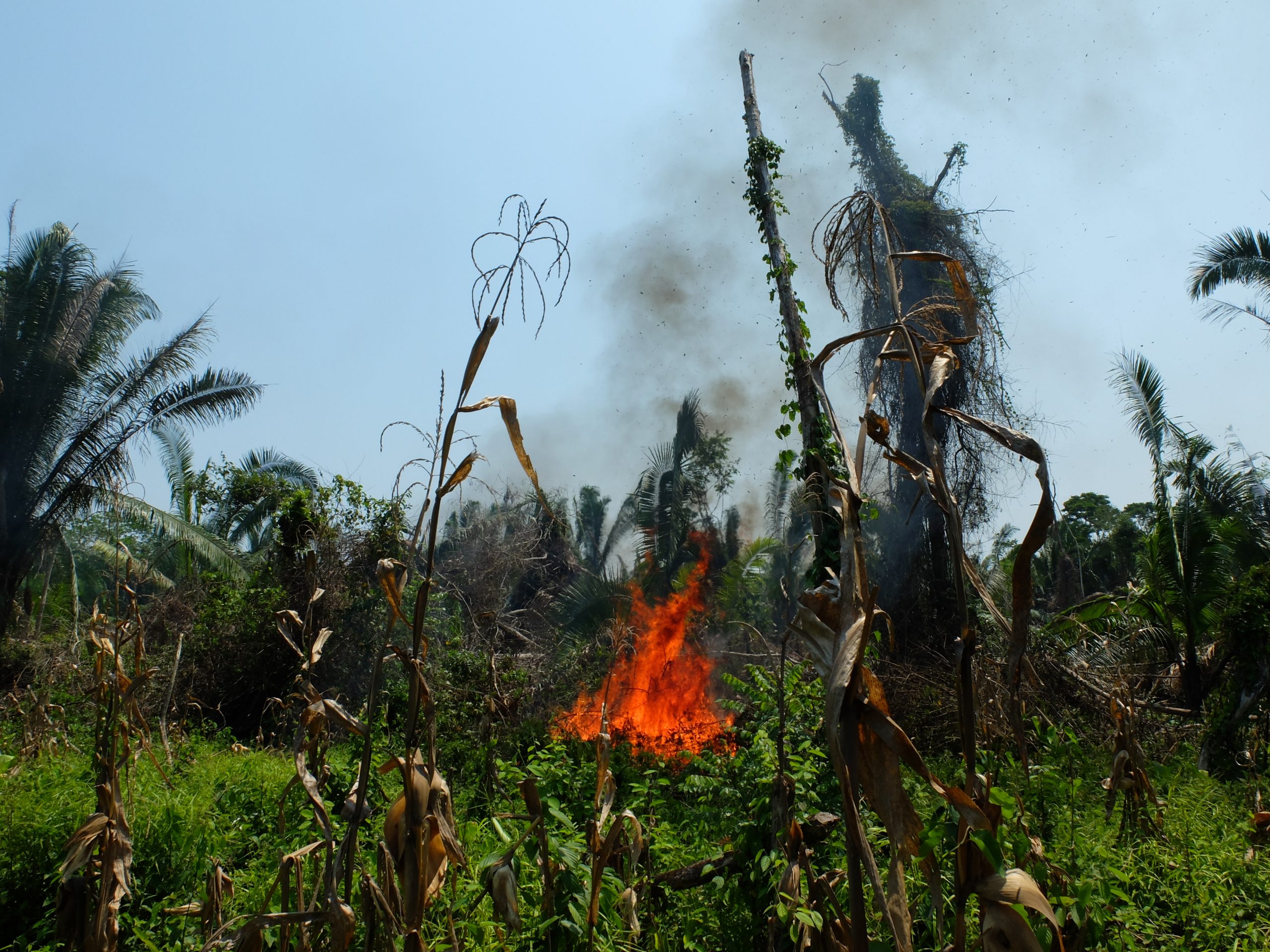By Cathy Smith, Ol Perkins, and Jay Mistry
Photo – Swidden clearance fire in Belize (Credit: Cathy Smith)
When most people in the UK think about landscape fire, they think about exceptional, devastating wildfire events like those in California, Australia, and the Amazon in recent years. Yet, for many people worldwide, fire is an everyday occurrence, being used for agriculture, pastoralism, hunting, fishing, and gathering. Such controlled fire use not only contributes to culture and livelihoods but can create more biodiverse landscapes in which there is less risk of devastating wildfires. Recent work by our team at Leverhulme Wildfires aims to highlight the importance of these livelihood fire practices at the global scale.
We collated information about fire use within subsistence-oriented and smallholder livelihoods from over 580 case study locations worldwide to create the Livelihood Fire Database (LIFE). In a recent paper published in Nature Sustainability, we used the LIFE database to look at trends in these fire practices over recent decades. We found that controlled fire use associated with swidden agriculture, pastoralism, hunting and gathering is declining. Declining fire use is more likely when these activities are oriented towards subsistence rather than mostly for the market.
Case studies in the LIFE database point to state governance and economic pressures as common drivers of declining controlled fire use. Many countries have strong anti-fire regulations that forbid or severely restrict burning. Reductions in fire use can also be incentivised through Payments for Ecosystem Services schemes and promoted through informational campaigns. Subsidies and land tenure reforms often encourage farmers to adopt permanent agriculture at the expense of swidden agriculture involving fire. Historically, some forms of fire use, such as for hunting or nomadic pastoralism, took place across large swathes of landscapes like tropical savannas. When these landscapes are converted to commercial uses, the remaining areas can be too small for traditional activities to continue.

Photo: Protective and pasture maintenance burning in Guyana (Credit Kayla De Freitas).
When people reduce or abandon fire use, this can undermine their livelihoods. For example, Borana pastoralists in Ethiopia, who have had to stop burning in rangelands, resultant bush encroachment and forage scarcity make it more difficult to graze cattle. Without patchy anthropogenic fire, vegetation becomes more homogenous, supporting less wildlife, as in Australia, where Martu hunting fires support hill kangaroo populations. Without frequent controlled burning, wildfire risk increases, as in those areas of the Brazilian cerrado where Xavante people no longer use fire.
Since the 1970s, ‘prescribed burning’ has been a mainstream approach to fire management by State agencies such as the US Forest Service. More recently, such programmes have explicitly been modelled on Indigenous fire use, or even employed Indigenous people to conduct prescribed burning, as in Australia. Yet, prescribed burning does not necessarily have the same outcomes in the landscape as contingent, everyday fire use associated with rural livelihoods. There is need to better support the everyday fire use of communities for whom burning is already of cultural and economic importance.






